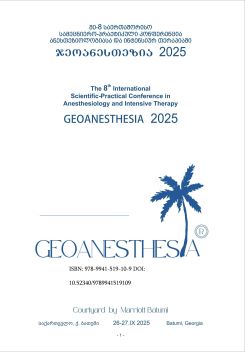Perioperative management of diabetes mellitus
DOI:
https://doi.org/10.52340/9789941519109.04ანოტაცია
Perioperative management of diabetes mellitus requires a structured approach to optimize surgical outcomes and minimize complications.
Current U.S. guidelines, including the American Diabetes Association Standards of Care in Diabetes (2025), the Endocrine Society Clinical Practice Guideline on Hospital Hyperglycemia (2022), and the Society
for Ambulatory Anesthesia Consensus Statement (2024), emphasize individualized glycemic targets, rational use of insulin therapy, and careful adjustment of non-insulin agents. Preoperatively, optimal control (HbA1c ≤8%, fasting blood glucose <180 mg/dL) and discontinuation of SGLT2 inhibitors several days before surgery are recommended. On the day of surgery, basal insulin is generally maintained with dose adjustments, while bolus and prandial insulin are withheld until oral intake resumes. Intraoperative management favors intravenous insulin infusion protocols for high-risk or prolonged procedures, with frequent glucose monitoring. Postoperatively, transition back to basal-bolus regimens should be guided by nutritional status, hemodynamic stability, and infection risk, with glucose targets of 100–180 mg/dL for most patients. The use of continuous glucose monitoring and insulin pump therapy may be continued in selected cases, provided safety and oversight are ensured. Collectively, these strategies highlight the need for multidisciplinary coordination between surgical, anesthesiology, and endocrinology teams to ensure safe and evidence-based care across the perioperative period.





